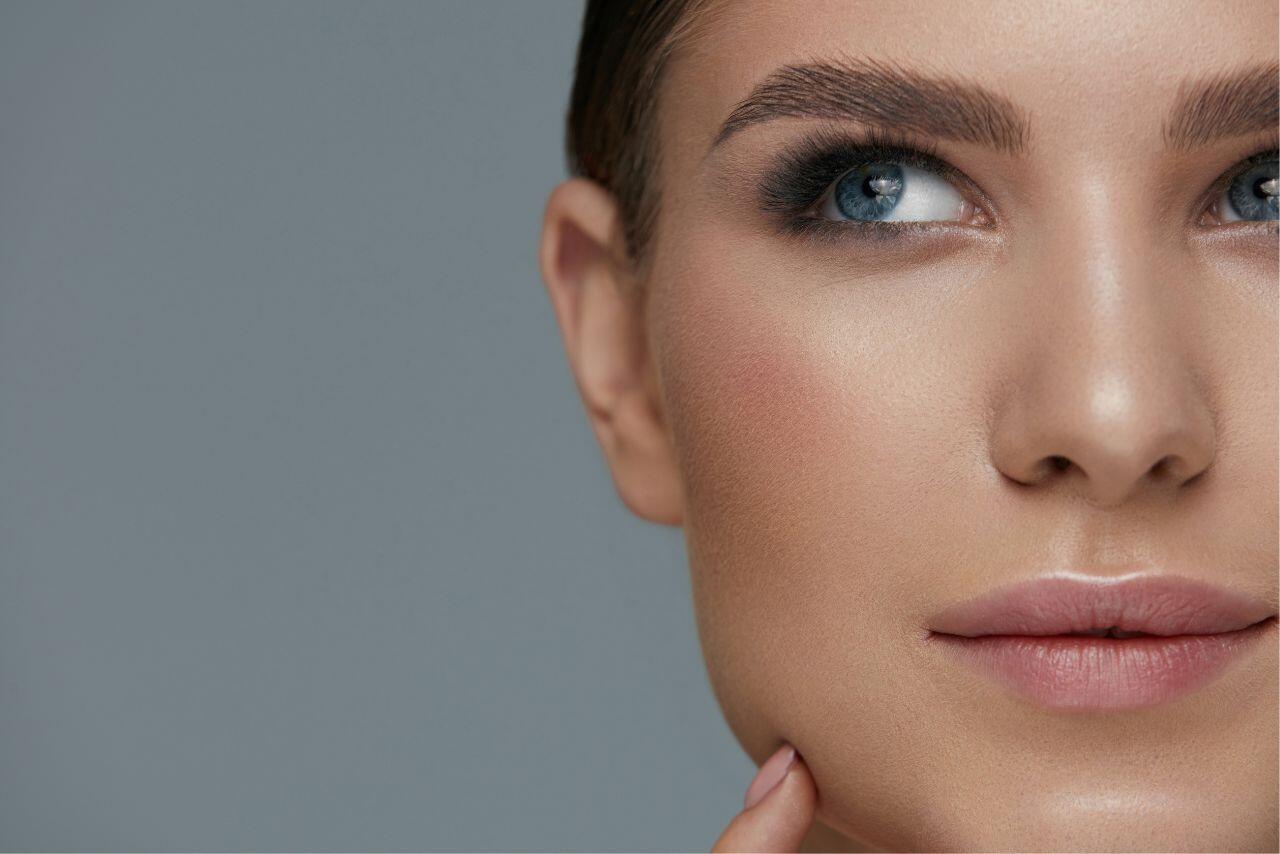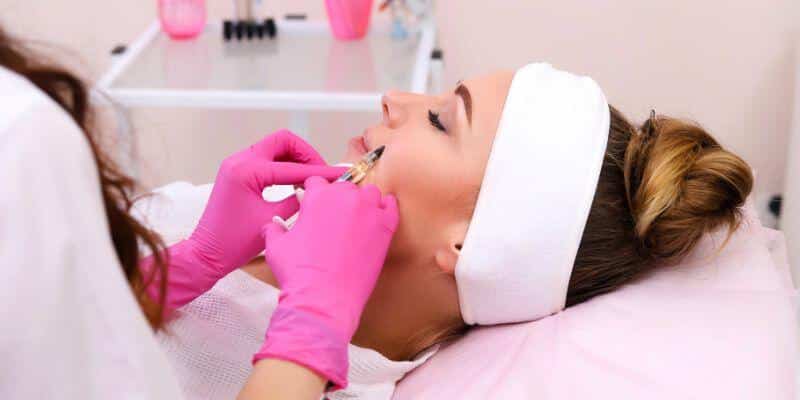
As we age, our body starts to lose key biochemicals in our skin tissue that normally help maintain a youthful appearance. These substances, including collagen and hyaluronic acid, are produced at a constantly declining rate as we age – unlike our youth, when they are present in great abundance. The reduction in these key tissue components leads to facial changes such as:
- Hollowing out around the mouth and cheeks
- Increasing nasolabial folds lines
- Fat pads descending due to gravity
- Thinning of the lips
- Flattening of the upper ridges from the nose to the mouth
- Dropping mouth corners that undermines the lip’s support and results in “marionette” lines
- Reduced support for the lower third of the face
But there is some good news. With the many filler options available today, physicians can restore the volume lost with ageing and the hollowing of the skin. Dermal fillers come in a variety of forms, each with unique benefits and uses. These include Restylane, Sculptra, Radiesse, Juvederm, and more.
Experienced aesthetic professionals analyze each patient’s face specifically to determine the kind and quantity of filler is required for the most realistic results. Prices for dermal fillers and wrinkle fillers are calculated per syringe and vary depending on the filler. During a pre-treatment consultation with the patient, licensed aesthetic practitioners go over the kind of dermal filler and the approximate number of syringes required for each specific procedure. In this article, we take a deeper look at one of one of the most effective dermal fillers, Restylane.
Restylane Dermal Filler
In order to treat facial wrinkles and folds, such as the nasolabial folds, Restylane is a safe and all-natural option. The natural substance hyaluronic acid, which already exists in the human body, is the basis for Restylane. The hyaluronic acid in Restylane is a non-animal stabilized hyaluronic acid gel that is crystal clear. Restylane uses the body’s own moisture to keep its shape. Hyaluronic acid is hydrophilic, or “water loving.” Each molecule of hyaluronic acid binds to more water as it slowly breaks down, so eventually the same volume can be maintained with less hyaluronic acid. The duration of results is aided by hyaluronic acid’s capacity to bind to water.
Unlike rooster-derived hyaluronic acids and bovine collagen products, Restylane is free from animal proteins. This reduces the possibility of developing an allergy to animal proteins.
After your treatment, you might have some redness or swelling. Typically, this won’t last more than seven days. Until any redness or swelling goes away, you should avoid the sun and cold outdoor activities.
Restylane Frequently Asked Questions
Where can Restylane be used?
More than 3 million treatments with Restylane have been performed in over 70 countries to treat a range of wrinkles and improve the look of the lips. The nasolabial folds, which run from the corners of the mouth to the nose, are among the wrinkles and folds on the face that are currently approved for treatment in the U.S.
How long does Restylane last?
According to studies, the effects of Restylane typically last for about six months. Up until the injected material is almost completely gone, the distinctive formulation aids in maintaining the cosmetic effect. Usually, follow-up sessions are scheduled every six months – but individual results will vary.
What are the pre-treatment precautions?
Take a few precautions before receiving Restylane treatment. Avoid taking aspirin, nonsteroidal anti-inflammatory drugs, St. John’s wort, or high doses of vitamin E supplements before receiving treatment. These substances might make the injection site more prone to bleeding and bruising. Additionally, let your doctor know if you have ever experienced facial cold sores so they can consider prescribing medication to lessen recurrence.
Is Restylane safe?
Dermatologists and plastic surgeons have safely administered more than 3 million Restylane treatments since 1996 in more than 70 different countries. For the treatment of facial wrinkles and folds, this ground-breaking procedure has now received U.S. approval.
Restylane has a very good safety record. Hyaluronic acid is the key active ingredient, which occurs naturally in the human body, making this product fully biocompatible. There is a small chance of contracting an animal-based disease or developing an allergy to animal proteins. Before using, there is no need to test for allergies.
Clinical studies show that Restylane treatments have a low incidence of negative side effects. Temporary redness and swelling at the injection site were the most frequently reported adverse reactions. Usually, these effects disappear in less than a week.
How much does Restylane cost?
The cost of Restylane injections varies from patient to patient because each procedure is specifically designed for each individual patient. The price of Restylane therapy is generally comparable to the price of similar procedures. Depending on the location of the injection and the quantity of medication used, the cost may range from $750 and up. However, Restylane’s results frequently show to be very cost-effective over time. To find the best recommendation for your unique needs, touch based with a licensed medical practitioner.
What benefits does Restylane offer?
Restylane is different than other hyaluronic acid-based products. Restylane does not contain any animal proteins, unlike some other hyaluronic acids based fillers. This reduces the possibility of contracting an animal-based disease or developing an allergy to animal proteins. No testing is necessary before administering Restylane.
What are my Restylane post-treatment instructions?
To reduce swelling immediately after treatment, use cold compresses (a cloth dipped in cold water, wrung out, and applied to the injection site). For six hours after treatment, refrain from touching the treated area to prevent damaging your skin unintentionally while it is still numb. The area can then be delicately cleaned with soap and water. Avoid subjecting the treated area to intense heat until any redness or swelling has subsided (sun lamp or sunbathing).
If you have previously suffered from facial cold sores, there is a risk that the needle punctures could contribute to another recurrence. Ask your doctor about any drugs that could reduce an outbreak. For one week following treatment, refrain from using aspirin, nonsteroidal anti-inflammatory drugs, St. John’s wort, or high doses of vitamin E supplements. These substances might make the injection site more prone to bleeding and bruising.
If you experience side effects that last longer than 14 days, please be sure to consult a healthcare professional. Additionally, enquire about suggestions for a follow-up appointment with your healthcare provider.

About the Author: Doris Dickson is a specialist writer for Health Supplies Plus, focusing on the aesthetic medicine industry. She diligently researches cosmetic treatments and products to provide clear, concise information relevant to licensed medical professionals. Her work supports Health Supplies Plus’s commitment to being a reliable informational resource and trusted supplier for the aesthetic community.
Disclaimer: The content provided in this article is intended for informational purposes only and is directed towards licensed medical professionals. It is not intended to be a substitute for professional medical advice, diagnosis, or treatment, nor does it constitute an endorsement of any specific product or technique. Practitioners must rely on their own professional judgment, clinical experience, and knowledge of patient needs, and should always consult the full product prescribing information and relevant clinical guidelines before use. Health Supplies Plus does not provide medical advice.

